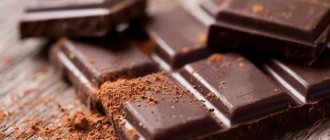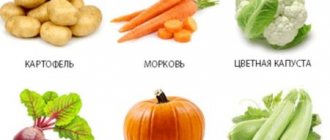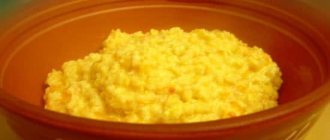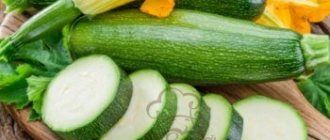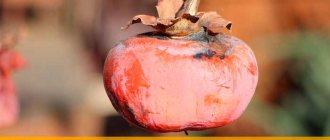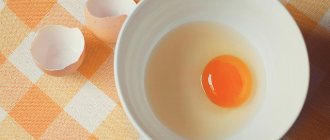Chemical composition
The product consists of identical components, the ratio of which varies depending on the type. For example, dark chocolate contains the maximum amount of cocoa beans and a minimum of sugar. The white variety has the opposite. There is practically no cocoa powder in the composition, but a lot of carbohydrates.
As for milk chocolate, it has a relatively small amount of cocoa beans. Sugar in this form contains about 50%. The indicator may vary depending on the manufacturer, raw materials, and brand.
Attention!
Some types of cocoa beans contain lead. This is a heavy element that accumulates intensively in the body. Even a small amount of lead negatively affects the production of enzymes - it slows it down or excessively activates it.
The main component of cocoa beans is caffeine. This substance is of concern for pancreatitis. Caffeine activates the pancreas, causing it to work harder. The organ becomes even more inflamed. To prevent further development of pancreatitis, doctors recommend eliminating products containing caffeine. This primarily applies to products such as coffee and tea.
The following substances in chocolate are dangerous for pancreatitis:
- Oxalic acid. Increases the secretory functionality of the pancreas. Supports inflammation, promoting the development of pancreatitis.
- Carbohydrates. They provoke intense production of pancreatic juice, which stimulates insulin synthesis. This hormone is produced by the pancreas, so additional stress is placed on the affected organ. Overexertion threatens to completely disrupt carbohydrate metabolism.
- Supplements They make the product more fatty, which supports inflammation of the pancreas and can make it worse. Regular consumption of chocolate with additives can cause complications of pancreatitis, including acute cholecystitis.
Sometimes chocolate contains fillers in the form of nuts, raisins, jams, syrups, and cookies. These substances also cannot be called beneficial for the pancreas. They place additional stress on the organ, causing it to produce more enzymes for breakdown.
Varieties of chocolate
- Bitter. Contains 60% cocoa or more. The taste is bitter, with a hint of saltiness. Due to the small amount of sugar in the composition, the absence of milk and additional sweet ingredients, it is considered dietary. Antioxidants contained in dark chocolate ensure proper interaction between organs, preventing cell destruction in advance. We recommend this type of product for patients with pancreatitis.
- Lactic. The composition negatively affects the functioning of the pancreas; it contains more than 50% carbohydrates, cocoa - no more than 35%, and an impressive amount of fat. The load on the gland increases due to the production of insulin, provoked by the high level of sugar in the dessert. Not recommended for people suffering from the disease. Eating milk chocolate will lead to health problems.
- White is not recommended during the acute phase of the disease, it is high in calories, contains an abundance of sugar, and lacks cocoa powder.
- Green has a color due to the content of either seaweed or green tea petals, depending on the country of origin. In the first case, the dessert comes from Spain and contains special amino acids that satisfy hunger and suppress appetite. The latter is a product of Japanese origin; Matcha tea petals are used for production. A similar product consists of granulated sugar, cocoa butter equivalent and milk powder. The taste is bitter, reminiscent of white chocolate, with a hint of true green tea. The mentioned type of dessert will not benefit patients with pancreatitis; it contains excess fat with an increased calorie content of the product.
A special version of the product is chocolate with various fillings and additives. Such a product should not be consumed; there is a high risk of developing glandular replenishment. For example, nuts greatly provoke the severity of the disease.
Is it possible to eat bitter and other varieties?
Medical opinions are divided on this matter. Some, focusing on the beneficial effects of the cocoa product, allow the consumption of a small amount.
Others require that it be excluded from the diet. What many doctors agree on is that occasional consumption of chocolate during certain phases of the disease is acceptable.
In remission
During this phase of pancreatitis, a little dark chocolate is allowed. White, milky and with fillers should be excluded. Some doctors still allow the inclusion of a white variety of delicacy in the menu. But in this case, it is worth purchasing expensive products. It is less harmful to the body as it contains higher quality ingredients.
During exacerbation
During this phase, eating chocolate and other products containing cocoa beans is strictly prohibited. Otherwise, the inflamed pancreas receives additional stress. This will negatively affect only the affected organ, triggering a more active development of pancreatitis.
In the chronic period
Doctors recommend avoiding eating any chocolate. Its components place unnecessary stress on the pancreas. Because of this, she cannot perform her functions normally. If you regularly consume this delicacy, you may develop pancreatic insufficiency and diabetes mellitus.
Acute form of pancreatitis
Can people with pancreatitis eat chocolate? For those experiencing an exacerbation, the answer is obvious - no. During this period, the pancreas reacts painfully to any irritants, and chocolate contains many substances that are unsuitable for the diseased organ:
- Caffeine and oxalic acid stimulate the production of pancreatic juice, which supports the inflammatory process in the body. The substances are present in all dark varieties.
- There are a lot of carbohydrates in all types of chocolate. When they are broken down, they require the pancreas to increase the production of insulin, which in this case becomes a serious overload and can provoke a complete disorder of carbohydrate metabolism.
- Supplements contain large amounts of fat. In particular, these are all types of nuts. Solid and fatty foods contribute to further exacerbation of the disease.
- Aroma and flavor additives in low-quality chocolates seriously irritate the mucous membranes, support inflammation, provoke bloating and allergies.
Naturally, at the moment of exacerbation, the use of such a product will become a crime against the body and will lead to additional days, or even weeks, of feeling unpleasant symptoms.
Benefits and harms for pancreatitis
There are several types of treats. The main three are black, white, milky. They differ in taste, calorie content, and chemical composition. Their effect on the pancreas is slightly different.
In remission
It is recommended to start with the black look. It is more natural and the healthiest. It contains antioxidants. They fight inflammation and reduce the risk of malignant tumors. A high content of cocoa beans (from 70%) can be harmful, so you should limit your consumption of chocolate. Eat it only if you feel good.
White chocolate is not recommended for people with pancreatitis. Some doctors still allow you to eat this sweetness little by little. This is only relevant for patients who do not have diabetes.
Despite the fact that white chocolate contains little or no cocoa, it should not be included in the menu. It contains a lot of sugar. Accordingly, the pancreas will work more actively to synthesize enough insulin.
Dairy types have a variety of tastes. But it’s difficult to call them useful. Contains a high carbohydrate content - about 50%. Fats, which are abundant in this type, also have a negative effect on the affected organ. Therefore, doctors advise excluding it from the diet during any phase of pancreatitis.
Advice
If you often eat milk chocolate, the patient runs the risk of gaining weight. Constant overload of the pancreas will lead to a worsening of the condition. The risk of developing diabetes mellitus increases.
During exacerbation
During this period, you cannot eat treats. This applies to all types of product. If you do not adhere to the recommendations, then there is a risk of developing pancreatic insufficiency, exacerbation of the disease, pancreatic necrosis, and increased pain.
In the chronic period
Patients with chronic pancreatitis should not use this product. However, doctors allow the inclusion of one or two cubes of dark or white chocolate during the recovery period. It's not worth eating anymore.
Different types of chocolate for pancreatitis
The delicacy, which came to us from the South American tribes of the Mayan Indians and more than two hundred years ago acquired the form available to us at the moment, has many varieties. Among them:
Lactic
Milk chocolate for pancreatitis is a favorite treat among children who cannot imagine their life without this sweetness. However, this particular variety contains the largest amount of carbohydrates (more than 50%), which can negatively affect the condition of the pancreas.
This is explained by the fact that carbohydrates provoke the production of large amounts of insulin, which negatively affects the pancreas. This type of chocolate has the highest energy value, but it is not recommended to use it for pancreatitis.
White
This type of chocolate appeared not so long ago, like dark and milk chocolate, but does not contain cocoa beans, as well as caffeine, which stimulates the secretion of gastric juice.
However, this type of chocolate contains a lot of sugar and dry milk powder, so you can’t eat it if you have pancreatitis. Due to the large number of such components, the product is very high in calories (550 kcal per 100 grams).
We can conclude that white chocolate for pancreatitis should not be included in the list of permitted products.
Bitter black
More than 70% of dark chocolate consists of natural cocoa beans. You can also find products with 75, 85 and even 99% cocoa. Cocoa beans themselves are quite bitter, and this product contains a minimal amount of sugar and no milk, which is why dark chocolate is also often called “bitter.”
Dark chocolate for pancreatitis is the most beneficial of all presented: the content of antioxidants in its composition exceeds their content in green tea and red wine.
The product is beneficial for the nervous and cardiovascular systems, improves emotional state and well-being. Also, a piece of dark chocolate will be an effective “cure” for low blood pressure. Dark chocolate is the least high-calorie of all the types presented. It is not considered a prohibited product during remission of pancreatitis.
Recommendations for use
To prevent the inclusion of the product in your diet from causing aggravation, remember the restrictions:
- eat if you feel well, there is no pain or discomfort in the stomach;
- eat no more than 40 g per day;
- buy only proven products.
It is not recommended to buy cheap chocolate if you have pancreatitis. It contains lower quality components.
Attention!
You can eat chocolate only after eating. It is forbidden to eat the treat on an empty stomach. Following these simple tips will help not provoke an exacerbation of pancreatitis.
What can you replace chocolate with?
There are many options for alternative chocolate substitutes. When an inflammatory process develops in the pancreas, it is recommended to use compotes, jelly, fruit, dried fruit, marshmallows, or marshmallows instead of chocolate.
In order to prevent the development of exacerbation of pancreatic disease, it is recommended to regularly visit your doctor and undergo all examinations and prescribed therapy in a timely manner. And strict adherence to a dietary diet will contribute to the effective restoration of the digestive tract. As noted, in case of acute pancreatitis, you should absolutely not eat chocolate, but when stable remission is established, a small piece of “earthly happiness” will give you a great mood and make life a little sweeter.
Chocolate for pancreatitis can be used in limited quantities and during the remission phase. Eating chocolate during an exacerbation of pancreatitis can aggravate the patient's condition, since chocolate treats become an unnecessary burden on the pancreas.
Useful alternative
With a meager diet, when the daily menu consists of cereals and pureed soups recommended for pancreatitis, the patient seeks to diversify the diet and use sweets, including chocolate, as dessert. All chocolate products contain some percentage of sugar, which negatively affects the functioning of the pancreas. You can reduce its amount in the daily diet and expand the menu with the help of unsweetened varieties of fruit, compotes, sours, homemade jelly, and dry cookies.
Chocolate for pancreatitis can be used in limited quantities without depriving yourself of pleasure. But it is important to follow the norm, choose the right product, and strictly follow the recommendations of nutritionists and doctors.
Composition of chocolate and its properties
Chocolate dessert is a very rich and fatty product. This confectionery product contains: cocoa, butter and sugar. Cocoa is present in all varieties of this sweet, except white chocolate. It has the following composition:
- The amino acid tryptophan, from which serotonin is synthesized.
- Caffeine.
- Tanning components and alkaloids.
- Antioxidants.
- Micro- and macroelements.
In addition to the fact that the product has excellent taste and aroma, it also has the following positive properties:
- Activates mental ability thanks to theobromine alkaloid.
- Theobromine and potassium have a beneficial effect on the functioning of the heart muscle.
- The flavonoids included in the treat have a positive effect on the digestive system and stop diarrhea.
- In case of throat irritation, it soothes cough.
- Magnesium is beneficial for women and helps to cope with premenstrual syndrome easier.
- The antioxidants contained in this product help fight tumors and age-related changes in the body.
- Tryptophan and serotonin act as antidepressants.
Important information: Is it possible to use baby food for pancreatitis in adults?
Milk chocolate contains the largest amount of carbohydrates (more than 50%), sugar and fat. This type of product is an indispensable source of increased energy, but it is very harmful for the inflamed gland and its use during an exacerbation can lead to a deterioration in well-being.
White chocolate differs from other varieties in the absence of cocoa powder, but the presence of cocoa butter is a prerequisite. Sugar, milk powder and flavoring additives are used in its production. It does not contain caffeine, but since it is a product with a high sugar content, its use for pancreatitis is not recommended by medicine.
Dark chocolate has the highest natural cocoa content (over 70%) and the lowest sugar content. This type of dessert is the most suitable option for patients with pancreatitis.
